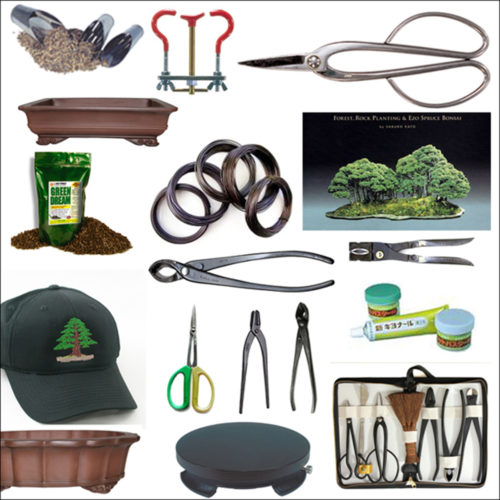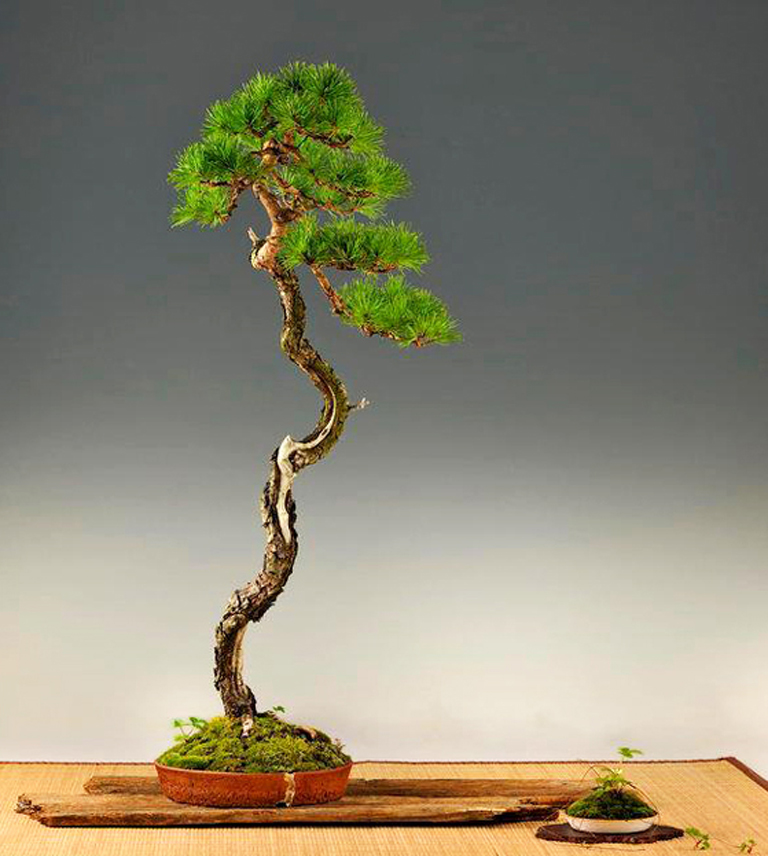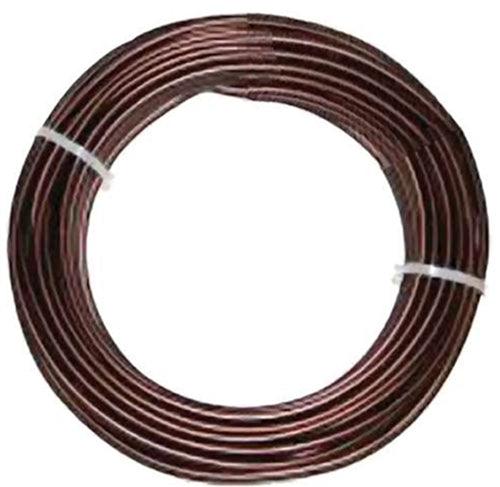Three Before & After Bonsai – Two Junipers & a Pine

Before and after bonsai styling by Juan Andrade. The trees are from top to bottom: Shimpaku juniper, Japanese black pine and a Needle juniper trunk with Shimpaku juniper foliage grafted on.
Juan Andrade was a long term apprentice at Bonsai Aichien nursery in Japan. We’ve been following Juan’s progress for a long time (here’s a Bark post from 2012 that features a tree of his). Juan posts regularly on facebook, which is where we found these photos.
MID WINTER SITE WIDE SALE
20% OFF EVERYTHING
PLUS AN EXTRA 10% TO 20% OFF ROSHI TOOLS
and AN EXTRA 10% OFF BONSAI POTS
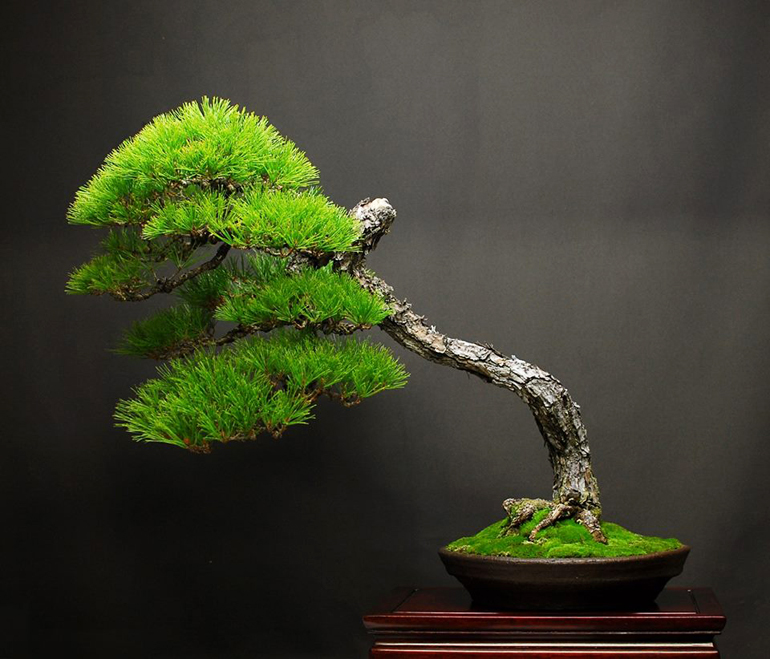
This pine has a bunjin feel, but I think it's a little too lush to qualify as bunjin. In case you are wonder what Bunjin is, there's a pretty good discussion here.
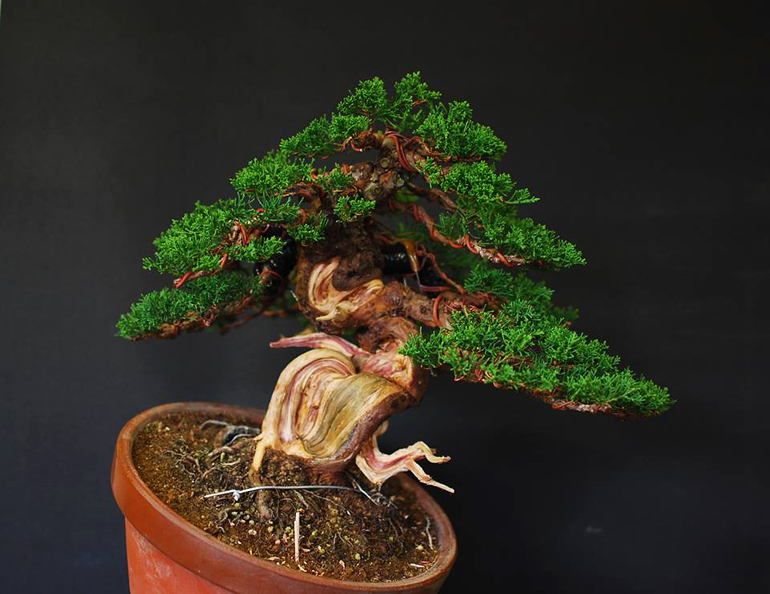
It's not in a pot yet, but if you look at the before photo above, you can see that this Shimpaku has come a long ways in the right direction.
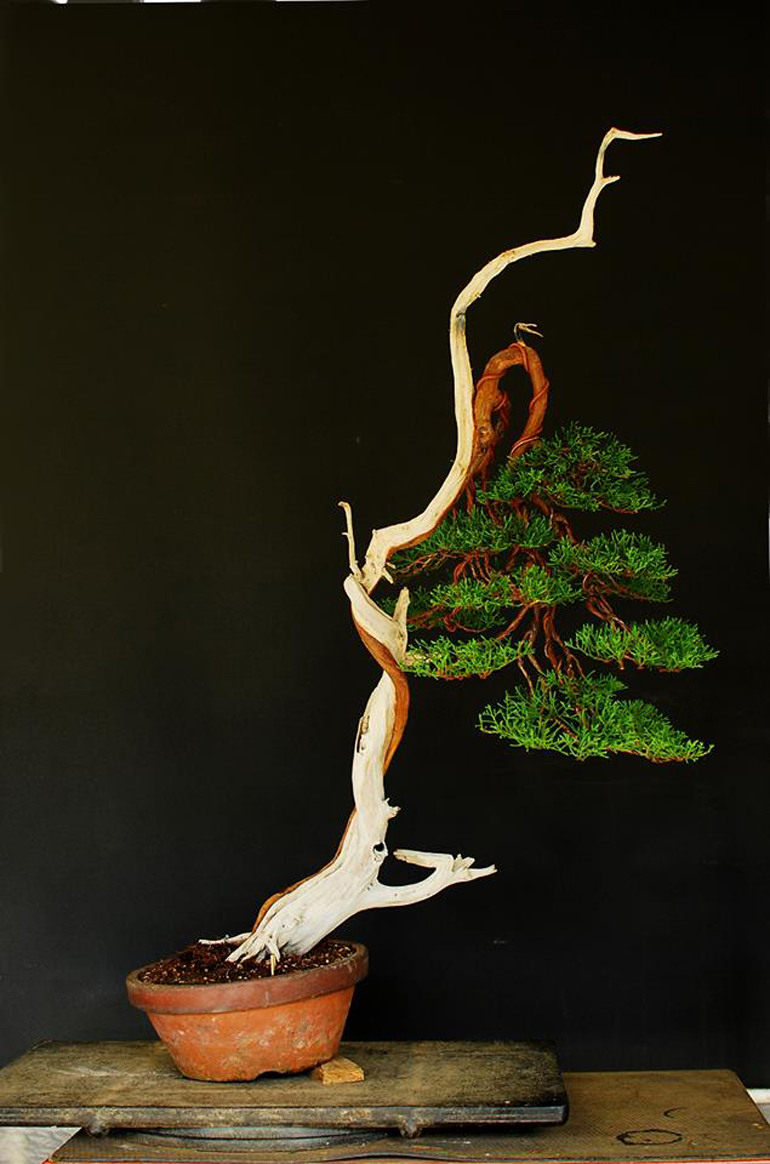
You might call this one a bunjin, though I'm not sure I've ever seen one so dominated by deadwood.
20% off Site Wide Sale
PLUS YOU CAN ENJOY EXTRA DISCOUNTS
IN ADDITION TO OUR SITE WIDE SALE
EXTRA 10% OFF 1-2 ROSHI TOOLS
20% OFF 3 OR MORE ROSHI TOOLS
PLUS AN EXTRA 10% OFF BONSAI POTS
–INCLUDING OUR TIE POTS–
FREE Shipping on Continental U.S. orders 75.00+
(only if you chose free shipping when you check out)
STONELANTERN.COM
Two Before & After Bonsai – Juniper & Pine
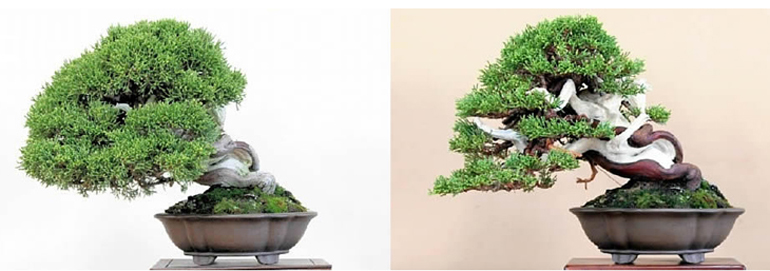
We found these two photos at Bonsai Shikoku. All the text is Japanese and there are no intermediate photos, so what you see is what you get. At a glance you can see that the foliage has been thinned in order to expose most of the trunk and some of the branching. This allows for an unobstructed view of the deadwood and the lower sections of the living veins. Another obvious change is the result of meticulous cleaning and brightening of the deadwood and living veins.
Continuing with our recent Before and After theme, we’ve got couple good ones for you. Both are from Bonsai Shikoku. The Shimpaku juniper above came with untranslated Japanese text, so you’re stuck with my comments, though we do have a link to an excellent video on treating deadwood and living veins.
The Japanese black pine below has English text, so we’ll dispense with my comments and go straight to the source. Enjoy!
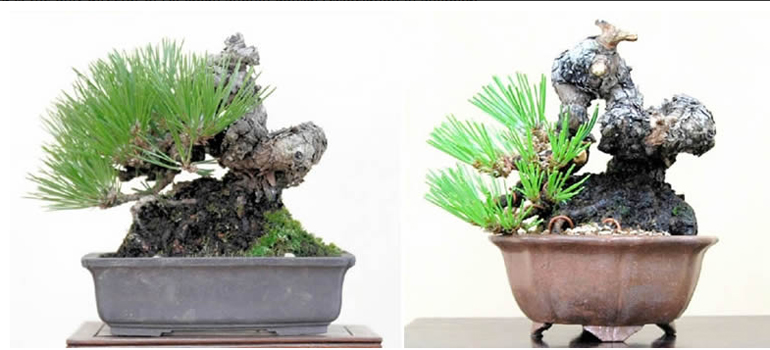
These photos are also from Bonsai Shikoku, but this time there's English text, as follows... "Artists adapt trees once in 4 to 5 years. The main purpose of it is to maintain a good size and to receive the sunlight by cutting the branches. "This time he adapted a Misho (grown from seed) Kuromatsu (Japanese black pine) which is about 40 years old. A long time has passed since the last adaptation. The tree's branches and needles were too long and the balance with trunk was bad. He felt the branch on the left is too big against the trunk on the right. "He cut the long branch and it allowed the trunk to be seen. He also showed us the technique to make Jin with the cut branch by knuckle cutters and chisels...." There's more here.–
A Steady Stream of High Quality Shohin Bonsai
There are few things more delicate than fresh spring Maple leaves (Trident maple in this case). This and the other bonsai in this post are by Haruyosi
Still on vacation so we’ll keep borrowing from our past. This time it’s Haruyoshi’s little trees. Haruyosi has been making and photographing a steady stream of high quality shohin bonsai (including the pots) for a long time
–
Red on red. In a previous Haruyosi post (Very Red and Very Rare), we mentioned that red glazes are expensive and not that easy to do. The tree is an Elaeagnus pungens (Siverthorn in English, Kangumi in Japanese).
More delicate spring beauty. This time the pot is yellow. It turns out that, like red pots, yellow pots aren't all that common. The tree is Malus halliana (Hall's crapapple).
This one is a Japanese quince (Chaenomeles speciosa)
Red and yellow together. In addition to being a highly accomplished bonsai artist, Haruyosi is a highly accompished ceramic artist
Four Shohin Bonsai & a Strange Translation
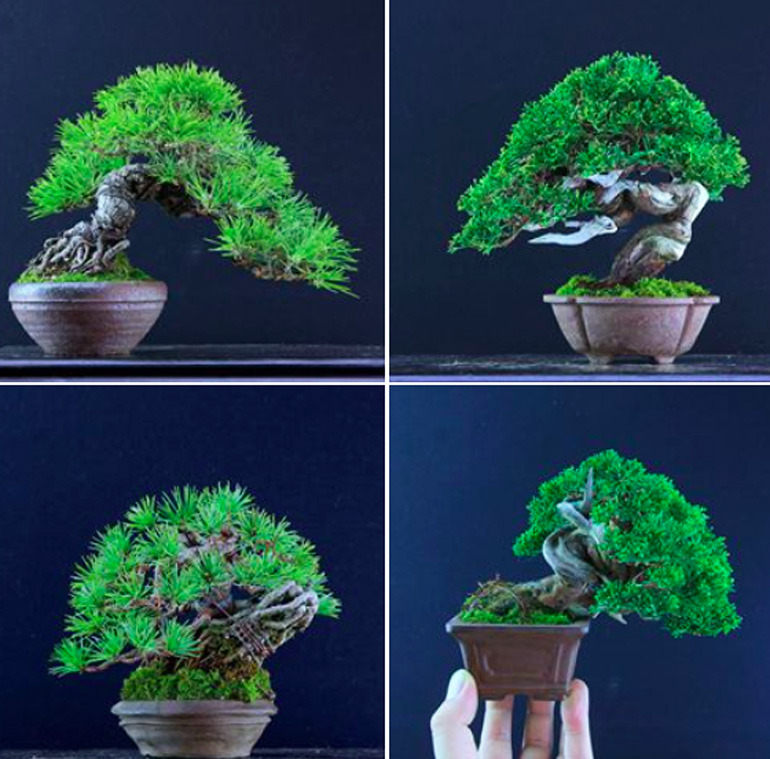
Miyazato Rintaro posted these four small trees last month. Here's a strange machine translation for you... "For Sale. I'm going to give it to the net in the afternoon. This time, from mini bonsai to small pieces, We have a tree with sights. Please contact us"
Shohin means a small thing in Japanese and all four of these trees qualify. They were posted by Miyazato Rintaro . The translations are machine generated, and though they generally tend to be better than they were a couple years ago, they still have a ways to go.
–

This translation for this one says... "14.5 cm itoigawa true kashiwa" (5.7") I just looked up kashiwa a couple places and both said 'oak.' Go figure. By the way, Itoigawa is a variety of Sargent's juniper. Here's a post from a couple years ago about the difference between itoigawa, shimpaku & kishu junipers

Only the size is different on this one... "10.3 cm itoigawa true kashiwa." (4")

This one says... "13 cm ishizuchi pine" (5.12"). Ishizuchi is a mountain in Japan. Though no variety is given, if I had to guess I'd say Japanese black pine (I'm wrong more often than I'd like to admit, so don't take it to the bank)

"17 cm awaji kuromatsu" (6.7"). Kuromatsu is Black pine (Japanese black pine in this case) and awaji is a city in Japan
Before & After Root-Over-Rock Black Pine Bonsai
Root-over-rock Japanese black pine by Suthin Sukosolvisit. No major restyling, but still a striking improvement. Sutin's caption reads simply... "Japanese black pine 2011-2013" The original before and after photos are from Suthin's timeline
Still on vacation, so we’ll simplify by borrowing from our archives. This one first appeared here almost exactly one year ago
Continuing with before and after bonsai from two days ago… A big part of bonsai involves transforming rough stock into beautiful, or at least passable bonsai. However, it’s equally important to do the periodic work necessary to keep a bonsai beautiful, or soon enough it will lose its shape and start to look like just another plant in a pot.
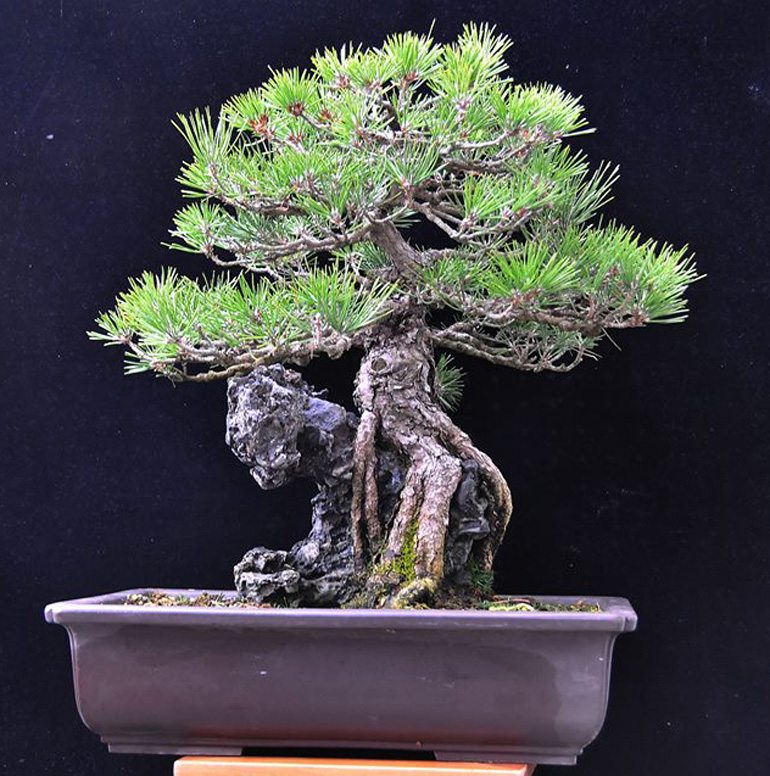
Before. This was taken after a period of undisturbed growth. For most types of trees (especially temperate zone trees), allowing new growth to remain undisturbed is necessary for maintaining health. This new growth is where the vigor of a tree is most concentrated, so continually cutting it back will sap (no pun intended) the tree's vital energy.
Continued from above…
Allowing a tree to just grow on its own for a while is essential to its health, and bringing it back into shape after this period of unrestrained growth is also essential. And of course, each time you bring a tree back into shape, it’s done with a eye to continued development and improvement.
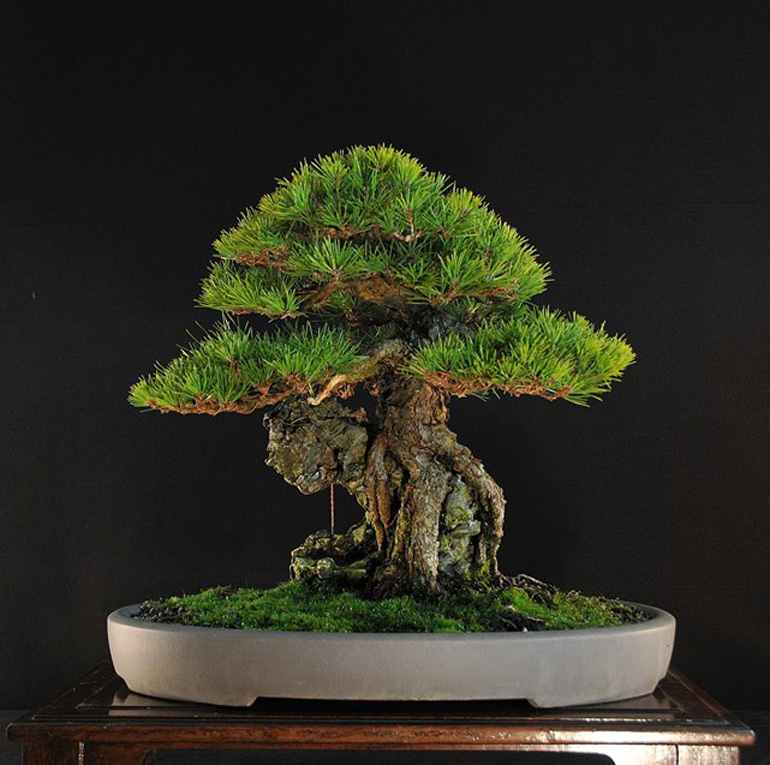
After. What a difference an expert hand and eye can make.
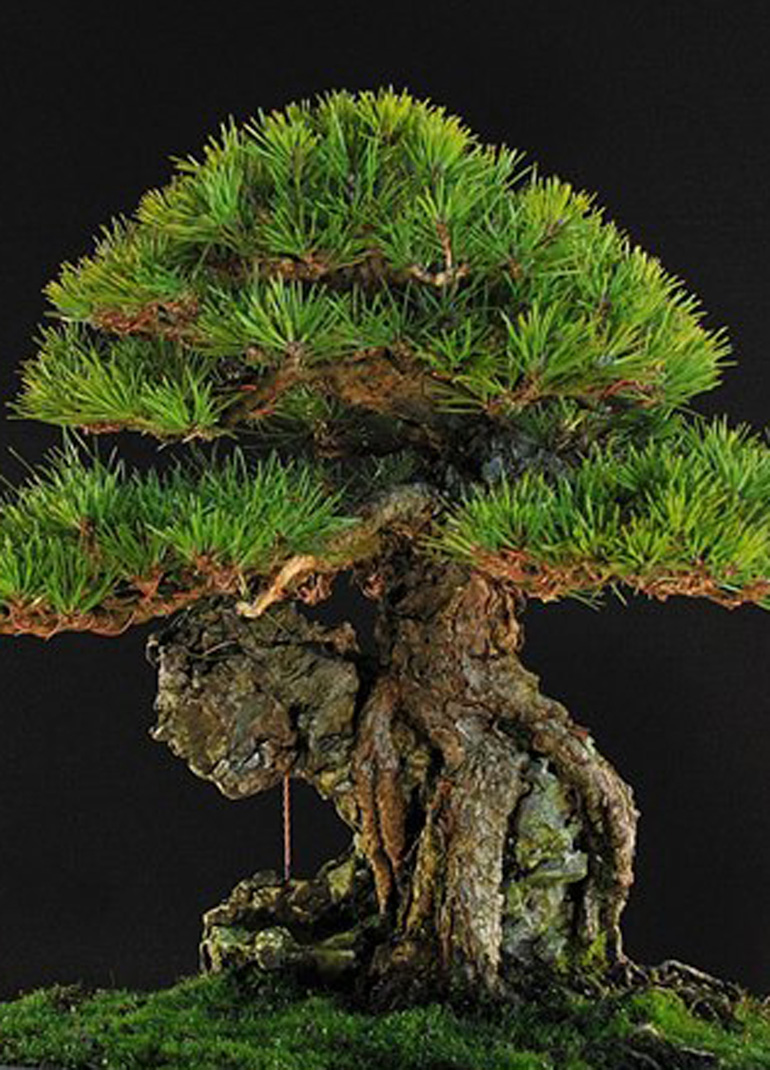
I cropped this one to get a closer look at the trunk and rock
Juniper Bonsai – Before & After
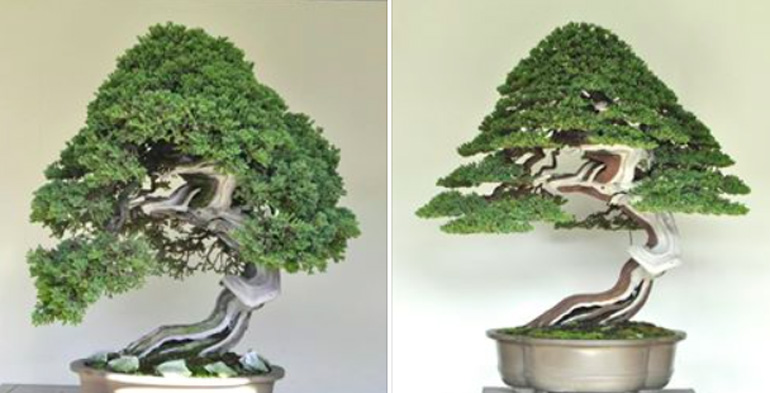
Before and after on an already established Juniper procumbens. By Naoki Maeoka
Traveling today, so we’ll make this sort and sweet. It’s what you might call a maintenance before and after. The tree is already well developed and just needs and expert’s touch to bring it back to it former glory and perhaps elevate that glory some. The expert is Naoki Maeoka. Beyond that, we’ll let you fill in the blanks.
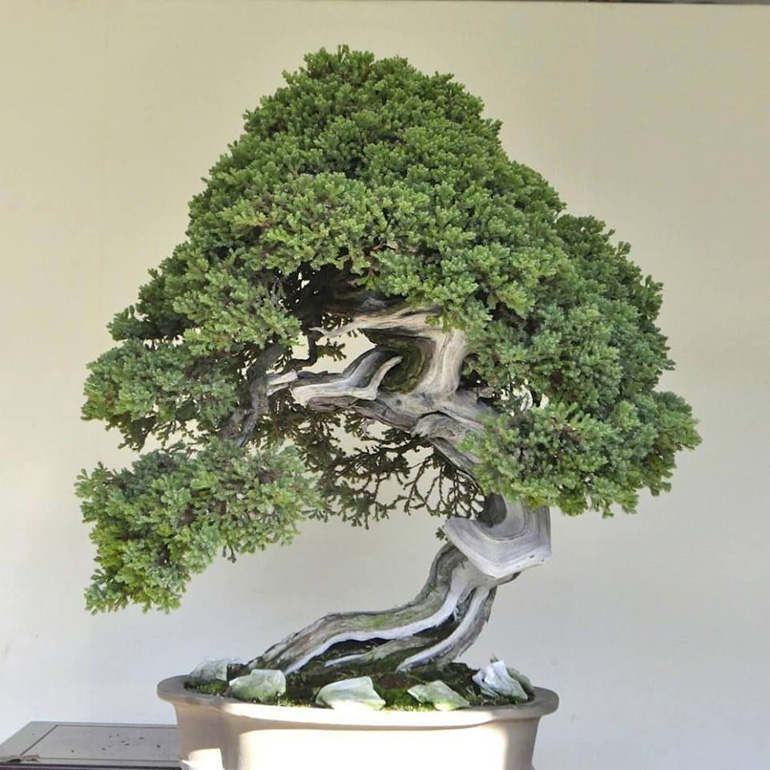
Before
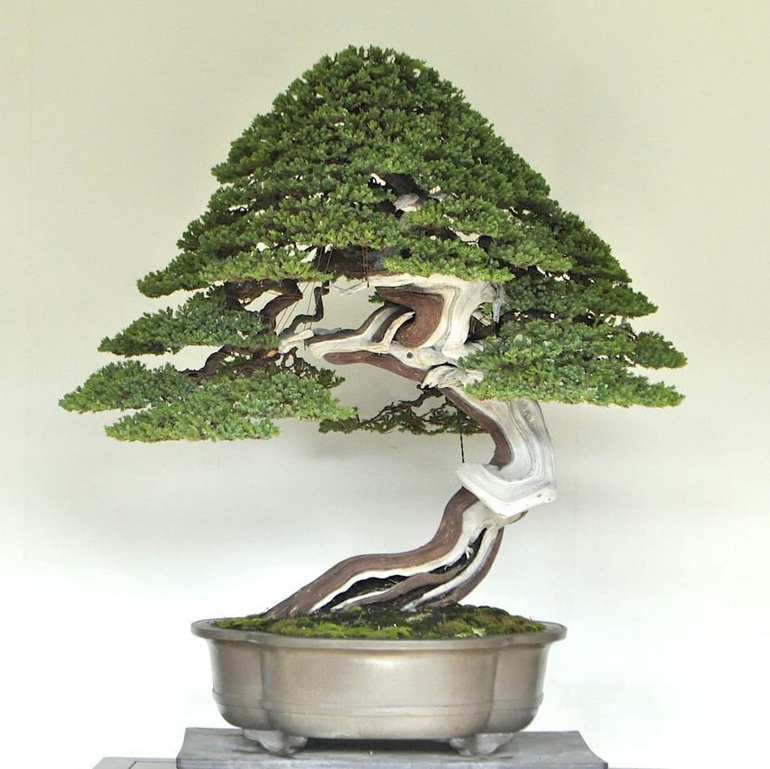
After
The Cutting Edge of Bonsai Innovation
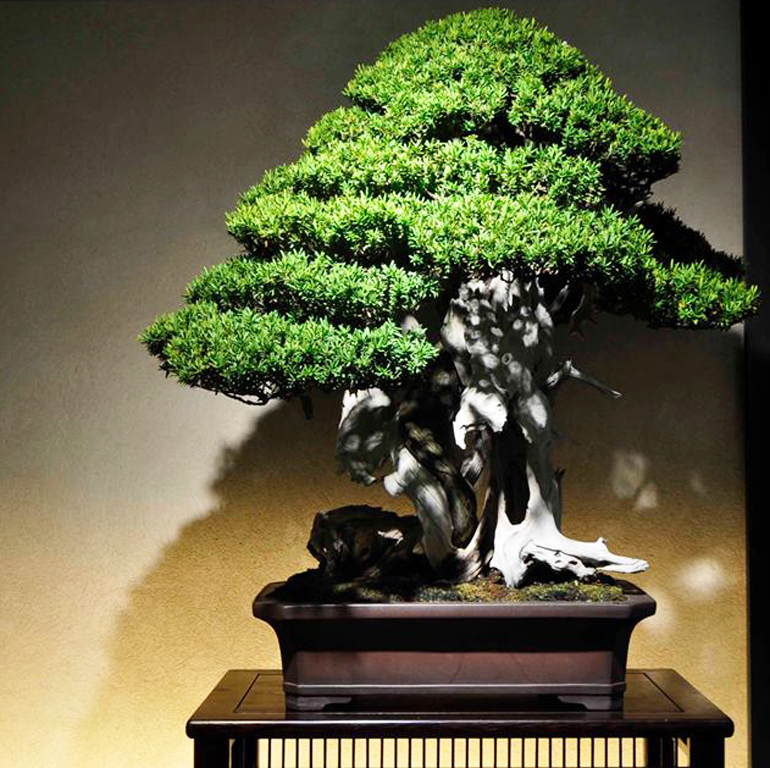
The play of light and shadow... This photo is from the Omiya Bonsai Art Museum. Here's part of the machine translation... "Japanese yew, Autumn Special Exhibition: Contemporary Bonsai Masters: Masahiko Kimura; Playing with Bonsai, the Origin of His Works" You can read more and see other masterpiece bonsai photos here
–
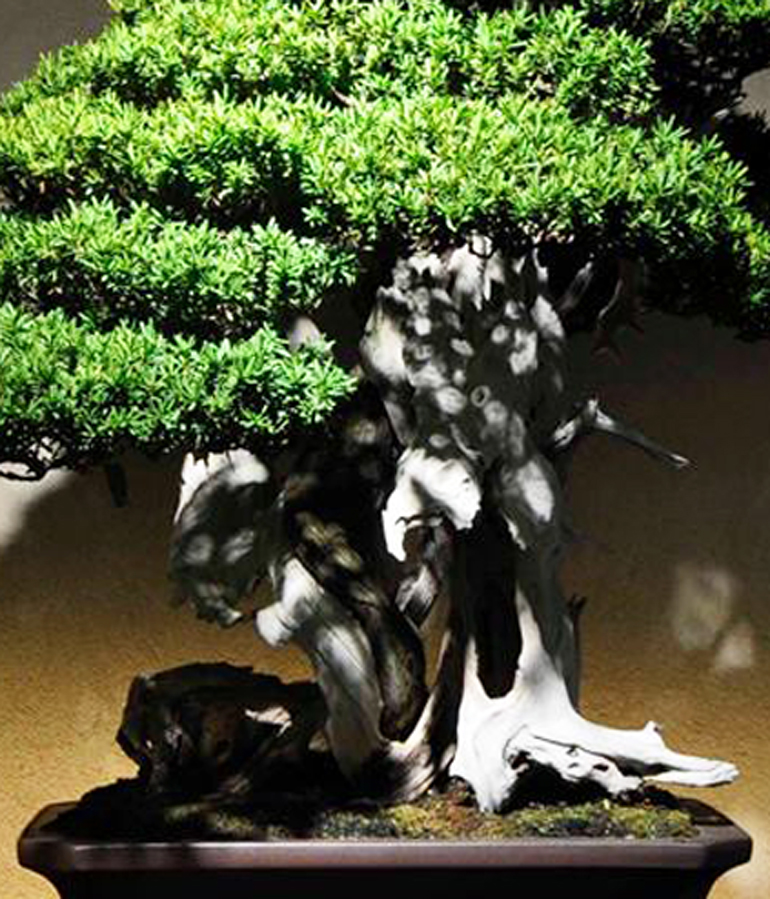
Cropped for a closer look at the play of light and shadow on the masterfully carved trunk
This unusual rock planting by Kimura is also featured at the Omiya Bonsai Art Museum. There is no caption, so we'll let it speak for itself
Here's one for a little contrast. We featured it here on Bark in December, 2009 (you can see the before photo there). The challenge was for Kimura to style a bunjin (literati) bonsai with only one branch. It's a Japanese red pine (Pinus densiflora). You can see it in our Masters’ Series The Magician, the Bonsai Art of Kimura 2. It was originally from an article that appeared in Bonsai Today issue 69
Sabina Juniper, Another Happy Accident
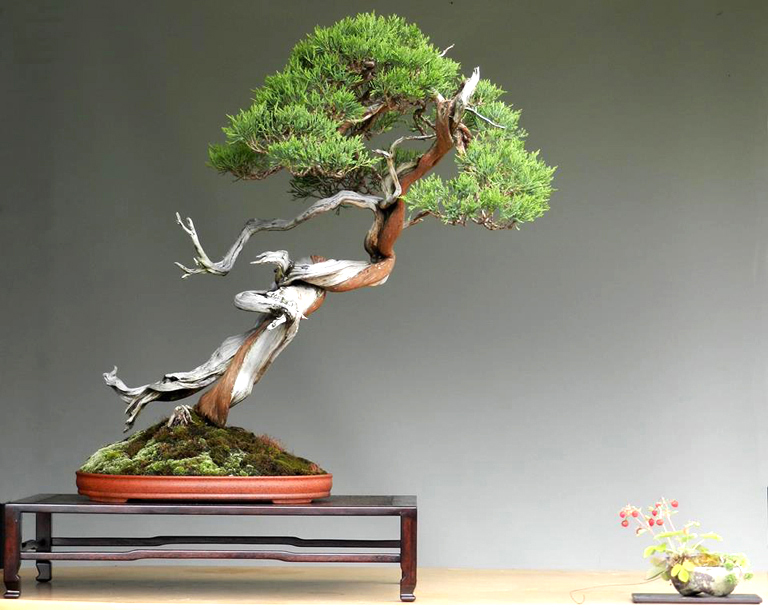
The original caption from Milan Karpíšek reads "Sabina of my friend ready for a show." From this we might assume that the tree belongs to a friend and was styled by Milan, but we know about assumptions.
The trees shown here are from Milan Karpíšek’s fb photos (Milan is from the Czech Republic). Like many of the bonsai featured here, these were discovered by accident (aka stumbled upon). A happy accident as it turns out
After yesterday’s post featuring three Sabina (aka Savin) junipers (Juniperus sabina). I went back to see others we’ve featured over the years and was surprised by just how many there are. This one is originally from July, 2014. The post was titled A Happy Accident
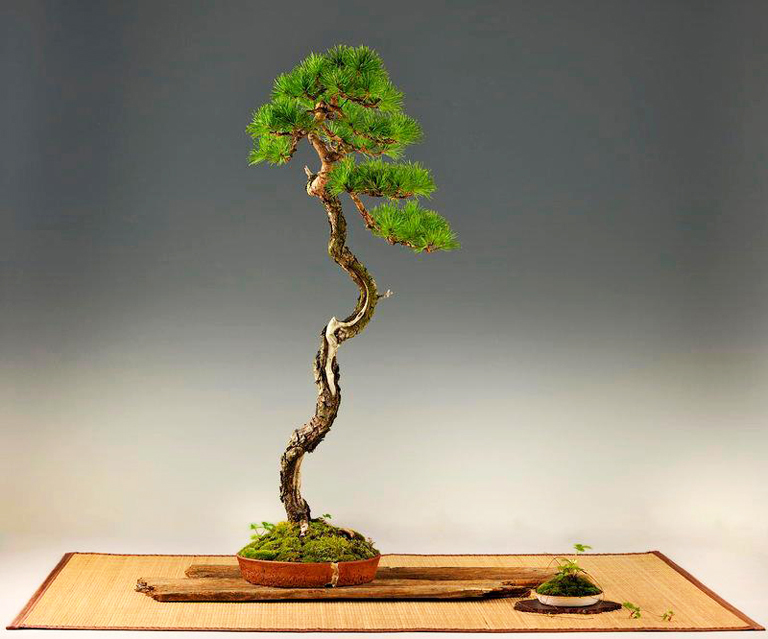
The caption on this humble and elegant bunjin style pine says "My entry on Noelanders." Milan doesn't say what kind of pine it is (Scot's?).
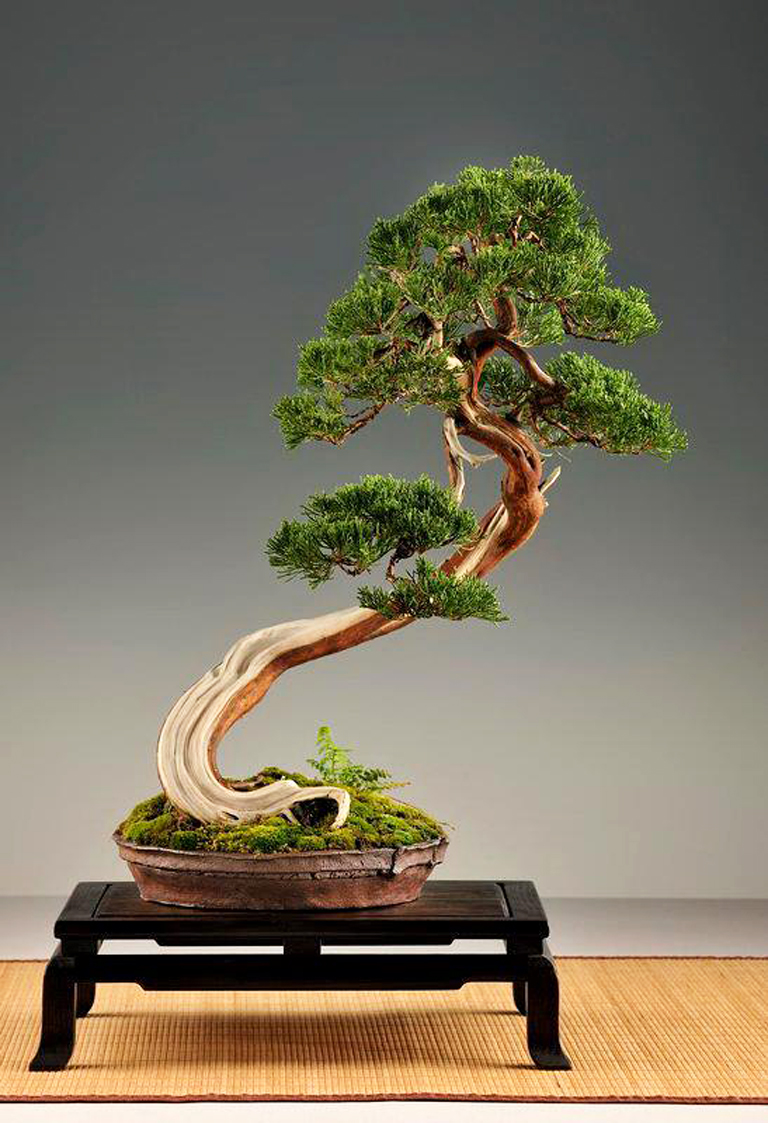
The caption on this one reads "For Sándor Papp the best picture of my Sabina photo Willy Evenepoel, Pilsen 2é11."
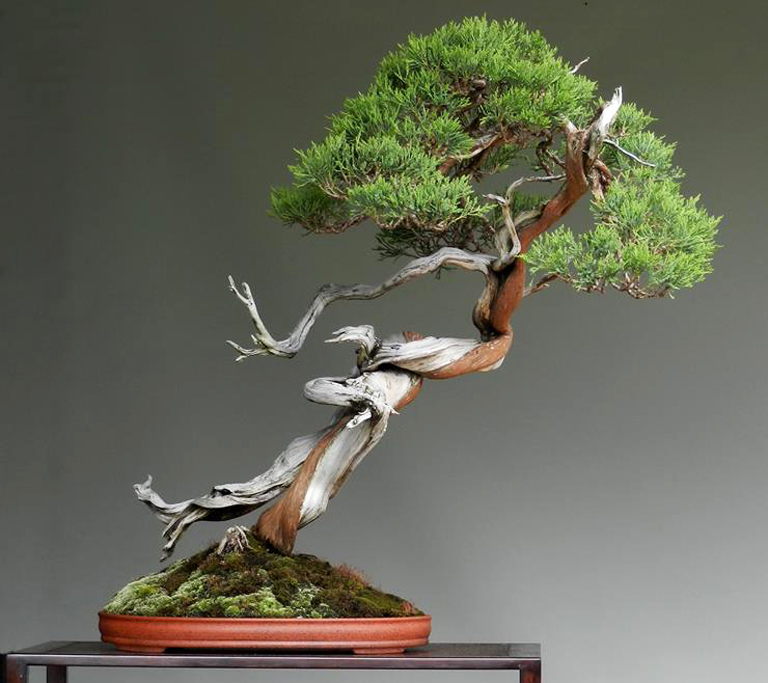
Close up of the tree at the top of the post. One thing that stands out is just how small the pot is relative to the tree. It's the mounding that makes this possible, but even so, that's a lot of tree for a small amount of soil.
This close up of the second tree (above) provides a better look at the aged bark and that perfect little shari. Nice pot too.
–
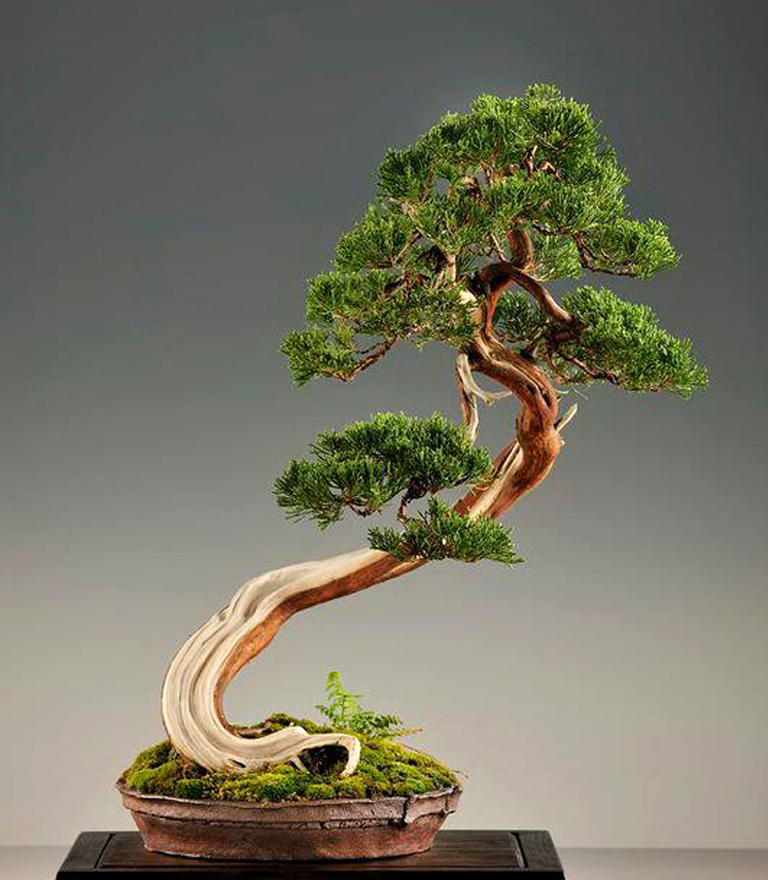
This close up provides a good look at the superb handmade pot and that little fern. Not to take anything away from the tree itself, which needs no superlatives.
–
Walter’s Wild Sabina Juniper
A recent photo of Walter Pall's wild Sabina juniper. There's a much older photo of this tree below
Second leg of our journey to the sun this morning, so once again we’ll take the easy way out and continue with a Walter Pall posts from our archives. This one is from May 2017, with a newly discovered lead photo.
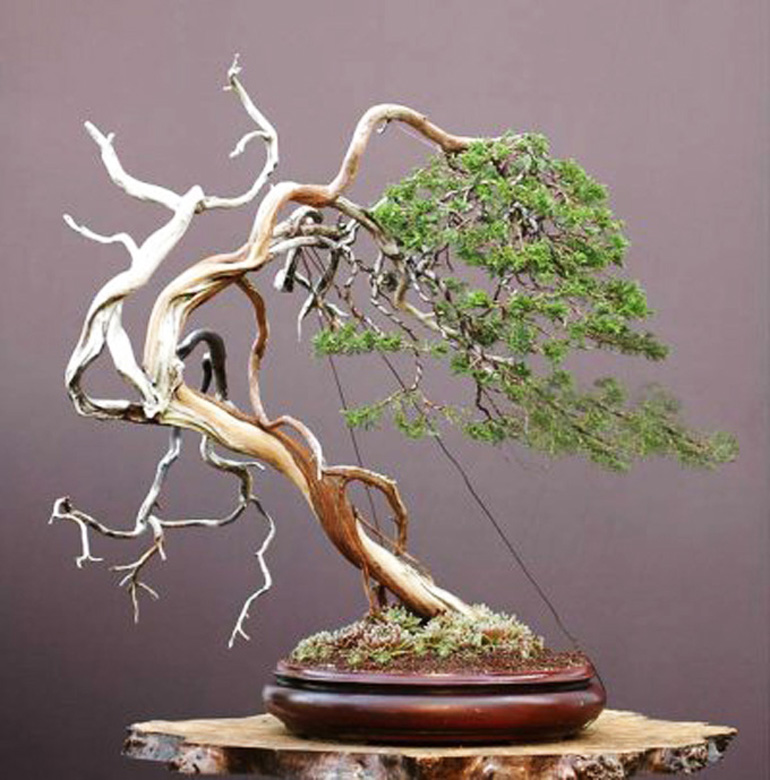
This photo of the same tree, guy wires and all, dates back quite a few years. We found it on The Art of Bonsai Project. The pot is by Bryan Albright
This Sabina is from a post on Walter's Bonsai Adventures. The tree was collected in Austria in 1997.
Here’s what Wikipedia has to say about Sabina junipers: “Juniperus sabina (Savin Juniper or Savin) is a species of juniper native to the mountains of central and southern Europe and western and central Asia, from Spain east to eastern Siberia, typically growing at altitudes of 1,000-3,300 m.”
This is a stock photo of a cascading Sabina with a somewhat 'in training' look. The caption says, "Sabina juniper, Juniperus sabina, 50 cm high, 80 cm long, 100 years old, collected in Austria, styled by Walter Pall."
Bonsai Adventures, Three Hornbeams
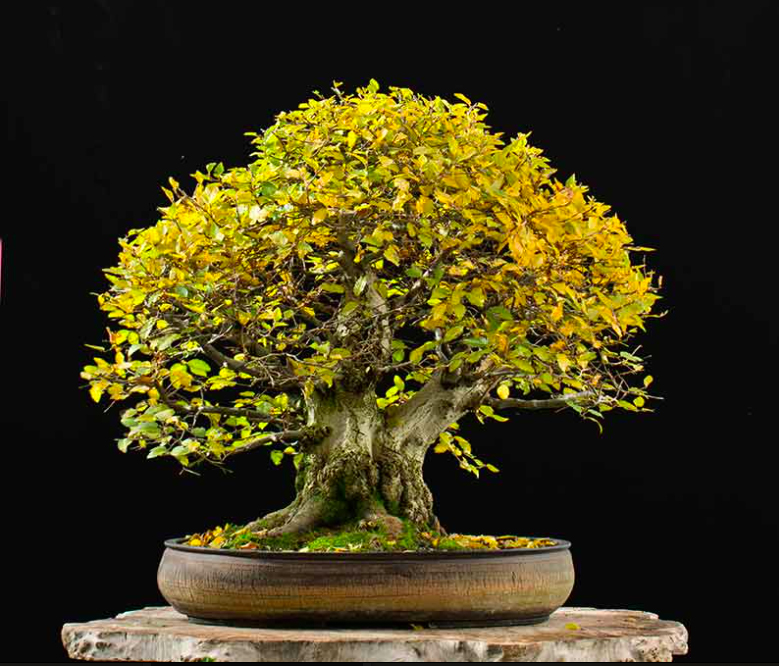
Oriental hornbeam (Carpinus orientalis) from Walter Pall's Bonsai Adventures blog
Staying on track with Walter Pall for at least another day. This time it’s three hefty Oriental hornbeams from Walter’s Bonsai Adventures blog. Time is of essences (leaving for a couple weeks in the sun later today) so we’ll provide the links and you do the research if you’re inclined in that direction.
–
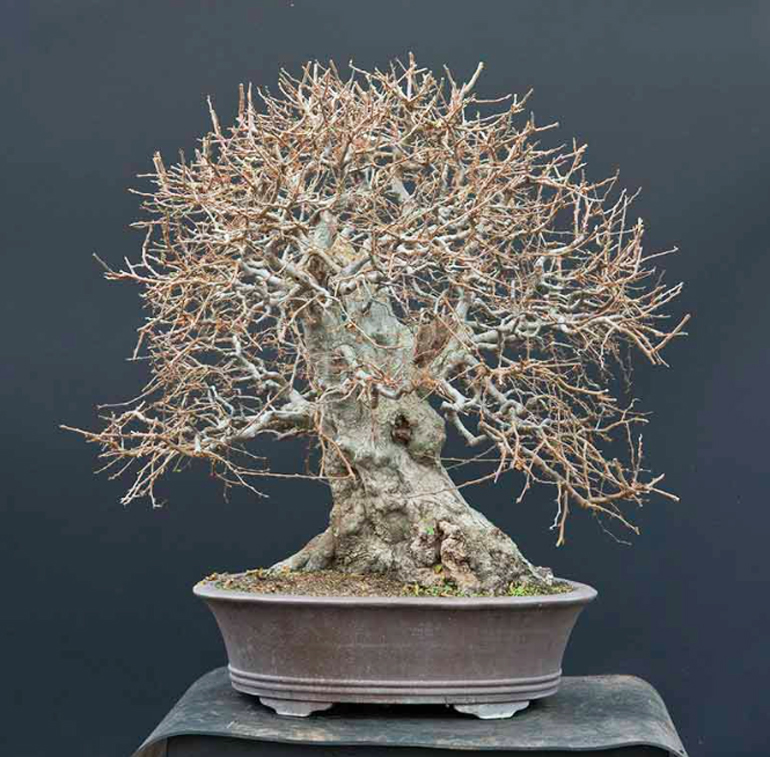
Another beefy Oriental hornbeam from Walter's blog. No leaves this time so you can see the profusion of small branches and twigs
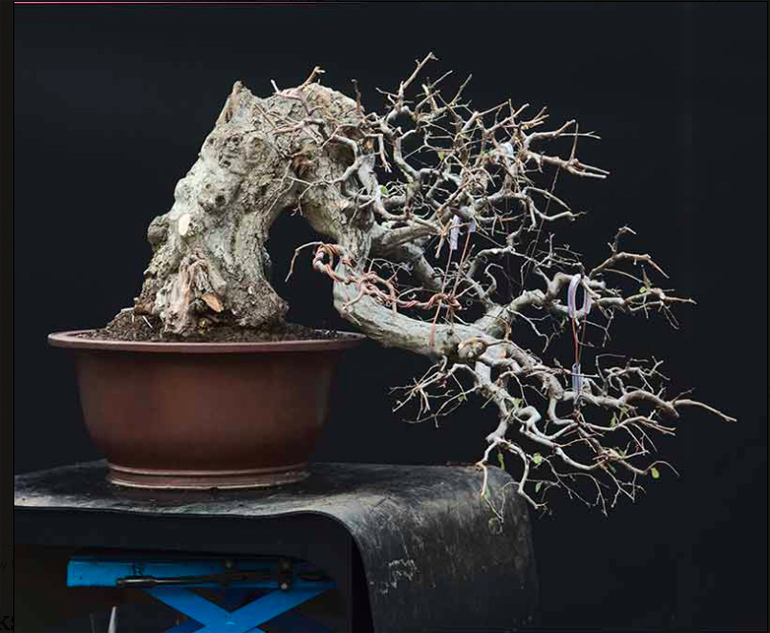
And one more. A rough cascade this time

